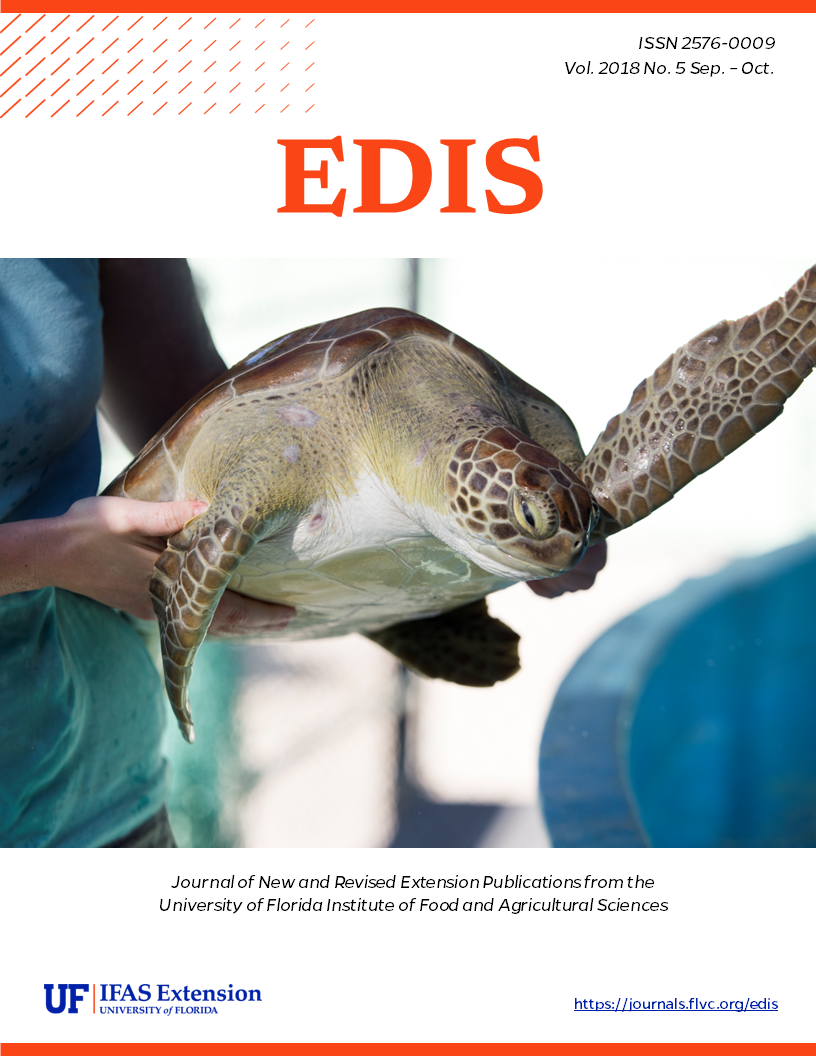Abstract
Lightning is a common occurrence in the Sunshine State. In fact, Florida is known as the lightning capital of the U.S. and ranks number one in lightning-caused deaths. As Floridians, we have grown accustomed to living with lightning and are possibly complacent about the destructive force that surrounds us. Lightning causes about $5 billion worth of damage and kills an average of 50 people in the U.S. each year. Although lightning kills only about 10% of people struck, many victims can suffer from physical and mental complications for the rest of their lives. In agriculture especially, as employers and employees we need to have a good working knowledge of lightning, its effects, and how to protect ourselves and others from this potentially life-threatening hazard.
References
Cooper, M. A. 1995. "Emergent care of lightning and electrical injuries." Sem. in Neurology 15(3). https://lightninginjury.lab.uic.edu/treatment.html https://doi.org/10.1055/s-2008-1041032
Crisp, B. n.d. "When lightning strikes." Archived. UF/IFAS Extension Pasco County. Accessed on January 7, 2016. http://pasco.ifas.ufl.edu/fcs/Lightning.shtml
Curran, E. B., R. L. Holle, and R. E. López. 2000. "Lightning casualties and damages in the United States from 1959 to 1994." Journal of Climate 13: 3448-3453. https://doi.org/10.1175/1520-0442(2000)013<3448:LCADIT>2.0.CO;2
Jensenius, Jr., J. S. 2018. "A detailed analysis of lightning deaths in the United States from 2006 through 2017." National Weather Service, National Oceanic and Atmospheric Administration. Accessed on September 13, 2018. https://www.weather.gov/media/safety/06-17lightning_fatality_analysis.pdf
Kithil, R. 2018. "Overview of lightning detection equipment." National Lightning Safety Institute. Accessed on September 12, 2018. http://lightningsafety.com/nlsi_lhm/detectors.html
MPSS. n.d. "Institute of Occupational Safety and Health: Safety Training Presentations-Lightning safety awareness." Accessed on September 12, 2016. https://www.osha.gov/dte/grant_materials/fy11/sh-22297-11/LightningSafety.ppt
National Lightning Safety Institute. 2008. "Lightning costs and losses from attributed sources." NLSI. Accessed on September 25, 2018. http://lightningsafety.com/nlsi_lls/nlsi_annual_usa_losses.htm
National Weather Service. n.d. Lightning Safety Tips and Resources. Accessed on January 7, 2016. http://www.lightningsafety.noaa.gov/index.shtml
National Weather Service. n.d. "Lightning science: Five ways lightning strikes people." Accessed on September 25, 2018. https://www.weather.gov/safety/lightning-struck
Orville, R. E. and G. R. Huffines. 2001. "Cloud-to-ground lightning in the United States: NLDN results in the first decade, 1989-1998." Monthly Weather Review 129(5): 1179-1193. https://doi.org/10.1175/1520-0493(2001)129<1179:CTGLIT>2.0.CO;2
OSHA. n.d. "Fatality and Catastrophe Investigation Summaries." United States Department of Labor. Accessed on October 4, 2018. https://www.osha.gov/pls/imis/accidentsearch.html
OSHA and NOAA. n.d. "Lightning safety when working outdoors." Occupational Safety and Health Administration. Accessed on September 12, 2016. https://www.osha.gov/Publications/OSHA3863.pdf
OSHA Emergency Action Plan. n.d. "29 CFR 1910.35." Accessed on September 12, 2016. https://www.gpo.gov/fdsys/pkg/CFR-2011-title29-vol8/pdf/CFR-2011-title29-vol8-sec1926-35.pdf
Whidden, A. 2007. "From your agent… Lightning facts and safety tips." Berry/Vegetable Times: Summer 2007. UF/IFAS Extension. Accessed on October 4, 2018. https://gcrec.ifas.ufl.edu/static/docs/pdf/strawberry-vegetable-times/2007/BVTSummer07.pdf
Unless otherwise specified, articles published in the EDIS journal after January 1, 2024 are licensed under a Creative Commons Attribution-NonCommercial-NoDerivs 4.0 International (CC BY-NC-ND 4.0) license.

